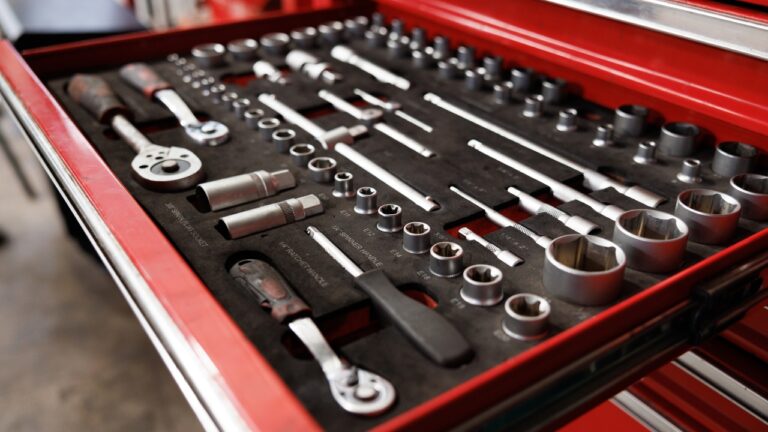10 Joanna Gaines-inspired trends that aren’t aging well
Joanna Gaines’ farmhouse style changed the way people decorated, and for years her influence was everywhere—shiplap walls, barn doors, open shelving, you name it. At first, the look felt fresh, but some of those choices didn’t age well.
Homeowners who rushed to copy “Fixer Upper” trends are realizing that certain features aren’t as practical or timeless as they seemed on TV. From design choices that wear out quickly to ones that make everyday living harder, here are ten Joanna Gaines-inspired trends many homeowners now regret.
Shiplap Overload

Shiplap gave walls a rustic, textured look that people loved, but entire rooms covered in it haven’t aged well. What once felt farmhouse-chic now looks dated and even a little repetitive. Paint it white, and it can make a space feel sterile. Leave it natural, and dust finds its way into every groove.
Many homeowners are now ripping it out or painting over it for smoother walls. A few accent panels can still look good, but the floor-to-ceiling shiplap trend has lost its staying power. What once looked custom now screams “2015 Fixer Upper.”
Sliding Barn Doors

Barn doors were everywhere after Joanna Gaines made them a staple, but they’re not as functional as they look. They don’t seal tightly, so privacy and soundproofing are a problem—especially for bedrooms and bathrooms. Plus, they’re bulky and need a lot of wall space to slide.
People also realized barn doors can be noisy and don’t always fit modern homes. Designers now see them as more of a fad than a classic feature. Homeowners are swapping them for traditional doors or pocket doors that offer better use of space and actual privacy.
Open Shelving Kitchens

Open shelves made kitchens look airy on HGTV, but in real life, they collect dust, grease, and clutter. Unless you’re styling dishes for a photo shoot, keeping them picture-perfect is a full-time job. Most families end up with mismatched mugs and kid plates on display, which kills the look.
Many people also regret losing upper cabinet storage. What seemed like a minimal, stylish upgrade turned into a daily frustration. Closed cabinets hide the mess, and more homeowners are reinstalling doors or going for glass fronts to balance style with practicality.
White-on-White Everything

The all-white kitchen or living room became a Fixer Upper trademark, but it hasn’t aged well. White cabinets, white walls, and white countertops look clean at first but show every fingerprint, scuff, and spill. Families quickly learned that maintaining an all-white space is exhausting.
The bigger issue is resale. Buyers now see all-white interiors as cold and outdated instead of bright and modern. Warm woods, color accents, and layered textures are making a comeback. The sterile white box look is already on its way out.
Distressed Wood Finishes

Joanna often used distressed wood to create a rustic farmhouse vibe, but faux-weathered finishes are starting to look cheap. Scratches and paint rub-offs might look interesting on TV, but in real life, they often make furniture and cabinetry look worn-out rather than stylish.
Over time, homeowners realized they wanted furniture that felt solid and finished, not artificially beat up. While natural patina still has its place, the mass-produced distressed look hasn’t held up in modern homes. More people are sanding and refinishing pieces to bring them back to life.
Oversized Farmhouse Sinks

Apron-front farmhouse sinks look great in photos, but they’ve proven impractical for many households. They’re expensive to install, take up more counter space, and can easily chip dishes because of their depth and hard porcelain surface.
People also underestimated how heavy they are. Many require reinforced cabinetry, which adds to the cost. While some still love the style, a lot of homeowners regret the hassle and are moving back toward stainless steel undermount sinks that balance function and design.
Word Signs Everywhere

“Gather.” “Eat.” “Blessed.” Joanna popularized word signs as part of the farmhouse aesthetic, but this trend burned out fast. At first, it felt warm and welcoming. Over time, it turned into a design cliché that feels more like clutter than décor.
Resale feedback hasn’t been kind either. Buyers see word art as overly staged, and many homeowners are taking them down in favor of real artwork or unique pieces. What started as charming now feels like a dated Pinterest fad.
Black Fixtures Everywhere

Matte black hardware and fixtures surged thanks to farmhouse makeovers, but homeowners are finding it’s harder to keep clean than expected. Water spots, fingerprints, and soap residue show up fast, which makes bathrooms and kitchens look dingy unless constantly wiped down.
Designers also point out that black hardware works best in small doses. Covering every faucet, hinge, and handle in black can feel harsh. Brass, nickel, and mixed metals are regaining traction as people move away from the all-black look.
Too Much Subway Tile

Subway tile became a Joanna Gaines signature, but it’s been used so much that it now feels overdone. Once considered timeless, it’s become the go-to safe choice, and that overexposure makes homes look cookie-cutter instead of unique.
The other issue is maintenance. With so many grout lines, it takes more effort to keep clean—especially in kitchens and bathrooms. Homeowners are switching to larger format tiles or textured backsplashes that add character without being overwhelming.
Faux Farmhouse Beams

Exposed beams were a big part of Joanna’s farmhouse style, but not every home is built for them. Many people installed faux beams that looked fine at first but quickly read as fake. In lower ceilings, they make rooms feel smaller and more cramped.
What was meant to add character ended up feeling forced. Homeowners are now opting for cleaner ceilings or investing in real wood details that fit the home’s scale. The faux beam trend has lost its appeal as people lean toward authenticity in design.
*This article was developed with AI-powered tools and has been carefully reviewed by our editors.







